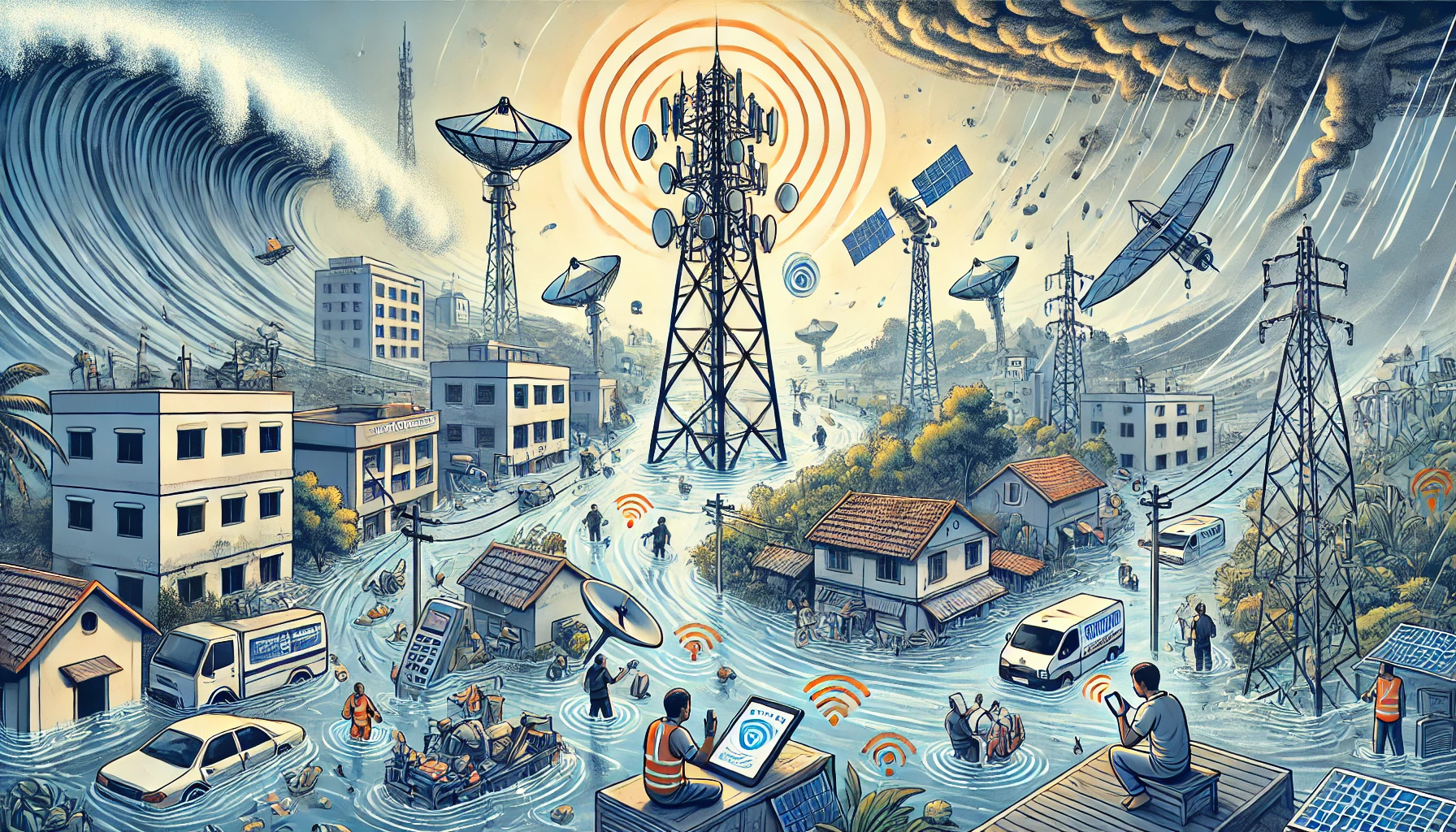Strengthening Telecom Resilience: DoT and CDRI Unveil Disaster Risk and Resilience Assessment Framework
The report is part of an extensive study focused on National and Sub-national Disaster Risk and Resilience Assessment for the Telecommunication Sector, spearheaded by CDRI.

- Country:
- India
The Department of Telecommunications (DoT), in collaboration with the Coalition for Disaster Resilient Infrastructure (CDRI), has unveiled a landmark report titled Disaster Risk and Resilience Assessment Framework (DRRAF). This comprehensive study marks a significant step towards fortifying India’s telecommunications sector against natural and man-made disasters, ensuring robust and uninterrupted communication networks across the country.
The report is part of an extensive study focused on National and Sub-national Disaster Risk and Resilience Assessment for the Telecommunication Sector, spearheaded by CDRI. The research was conducted across five disaster-prone states—Assam, Odisha, Tamil Nadu, Uttarakhand, and Gujarat—each representing diverse geographic and climatic challenges. The study meticulously analyzed disaster risks and resilience strategies specific to the telecom sector, including vulnerabilities from floods, cyclones, earthquakes, and other hazards.
DoT played a pivotal role by coordinating with State Governments, Telecom Service Providers (TSPs), and Infrastructure Providers to gather critical data required for the assessment. The collaboration facilitated a thorough evaluation of approximately 0.77 million telecom towers, highlighting the sector’s exposure to multi-hazard risks.
Key Messages from Leadership
Dr. Neeraj Mittal, Secretary (Telecom) & Chairman of the Digital Communications Commission (DCC), underscored the national priority of building resilient telecom infrastructure. In his inaugural address, he reaffirmed DoT’s commitment to ensuring seamless connectivity before, during, and after disasters, aligning with the United Nations’ ‘Early Warning For All by 2027’ initiative. Dr. Mittal called for unified action from government agencies, telecom operators, and disaster management bodies to safeguard India’s telecom infrastructure against natural calamities.
Amit Prothi, Director General of CDRI, highlighted the telecom sector’s crucial role in contributing to India’s GDP and emphasized that resilient communication networks are essential for economic growth, disaster response, and maintaining connectivity. He pointed out that the study offers scalable models, actionable insights, and incorporates global best practices to strengthen communication services.
Mr. Manish Sinha, Member (F), DoT, reflected on his personal experiences with disasters, emphasizing the indispensable role of telecom networks in post-disaster scenarios. He noted that technological advancements have significantly improved network resilience and stressed that the study’s outcomes provide a roadmap to minimize service disruptions, reinforce infrastructure, and enhance emergency response mechanisms.
Shri Sanjay Agrawal, DDG (DM), DoT, highlighted the critical role of inter-ministerial coordination and expressed gratitude for the support from LSAs, TSPs, Infrastructure Providers, and industry associations such as DIPA, COAI, and IBF. He acknowledged the valuable contributions from government agencies like NDMA and SDMAs, whose on-ground insights ensured that the study’s recommendations are both technically robust and practically implementable.
Strategic Initiatives by DoT to Enhance Telecom Resilience
The DoT has proactively implemented several strategic measures to bolster disaster preparedness and telecom resilience, including:
- Real-time coordination with LSAs, State Governments, and telecom operators for rapid disaster response.
- Nationwide deployment of an indigenous Cell Broadcast System for emergency alerts.
- Implementation of Public Protection and Disaster Relief (PPDR) networks in collaboration with the Ministry of Home Affairs.
- Strengthening regulatory frameworks to expedite the restoration of telecom services post-disaster.
- Promotion of satellite-based communication and High Altitude Platform Systems (HAPS) to maintain connectivity in disaster-affected regions.
Key Insights and Recommendations from the DRRAF Report
The report introduces a Disaster Risk and Resilience Index to evaluate the vulnerability of telecom infrastructure based on the intensity, frequency, and impact of disasters. The study recommends a multi-faceted approach combining technical upgrades, governance reforms, financial strategies, and stakeholder collaboration to strengthen the sector’s resilience.
Strategic Recommendations Include:
- Enhancing Technical Planning and Design: Develop robust infrastructure capable of withstanding disaster impacts.
- Building a Multi-Hazard Information Repository: Enable data-driven risk management through comprehensive hazard mapping.
- Implementing Risk-Informed Governance: Integrate disaster resilience into sectoral policies and regulatory frameworks.
- Developing Risk-Sharing Instruments: Protect telecom operators from financial vulnerabilities through insurance and risk-pooling mechanisms.
- Establishing a Cross-Sectoral Framework: Foster collaboration among government agencies, telecom operators, and disaster management bodies.
- Strengthening Financial Support: Secure funding for the resilience of critical telecom infrastructure.
- Promoting Last-Mile Connectivity: Ensure inclusive access to communication during emergencies.
- Leveraging Digital Tools: Enhance service restoration through advanced digital solutions and collaborative platforms.
- Upscaling Institutional Capacity: Improve emergency preparedness through training and capacity-building initiatives.
- Implementing Monitoring Mechanisms: Enhance service quality and reliability through precise monitoring and evaluation systems.
Path Forward
The adoption of these recommendations, under DoT’s leadership and with multi-stakeholder engagement, will empower India’s telecom sector to effectively anticipate, respond to, and recover from disasters. By mainstreaming resilience principles at the policy and planning levels, the DRRAF aims to promote cross-sectoral collaboration and ensure uninterrupted communication, both within India and globally. This initiative not only strengthens the telecom sector’s ability to withstand disasters but also contributes to national economic stability and disaster response capabilities.










